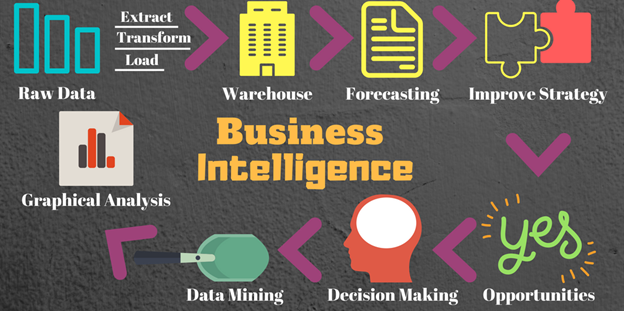
Business Intelligence (BI) goes far beyond being just another academic subject. It is a vital bridge between data, technology, and strategic decision-making. As management students in Australia increasingly lean into BI-focused programs, understanding its real-world applications becomes crucial to standing out academically and professionally.

BI is a technological process that involves gathering, processing, and analyzing raw data into actionable insights. These insights enable organizations to make data-driven decisions, enhance efficiency, predict customer behavior, and optimize internal processes.
FIT5195 is a comprehensive module under Business Intelligence at Monash University. It equips students with practical and theoretical knowledge through subtopics such as:
BI architecture refers to the framework that defines how data is collected, stored, and made accessible for analysis. A well-defined architecture ensures scalability, performance, and reliability. The architecture typically includes a data source layer, ETL (extract-transform-load) processes, data warehouse, and reporting layer with visualization tools like Tableau or Power BI.
Predictive analytics involves statistical models and machine learning techniques to forecast future trends based on historical data. Techniques like regression analysis, classification, and clustering help anticipate customer churn, market shifts, and risk management strategies.
Data warehousing is the foundation of BI. It consolidates large volumes of data from multiple sources into a central repository. The key processes include:
Popular data warehousing tools include Amazon Redshift, Snowflake, and Google BigQuery.
Data science adds depth to BI by enabling automated analysis using algorithms. Tools like Python, R, and Jupyter Notebooks allow for experimentation with models such as:
This integration is crucial for industries like finance and healthcare where predictive accuracy is paramount.
Jane, a postgraduate student at the University of Melbourne, was struggling with her FIT5195 assessment. She decided to use Microsoft Power BI for her final project on retail customer segmentation. By connecting it to a SQL database and applying clustering techniques, she identified five unique buyer personas. Her professor praised her for implementing real-world analysis into her project—earning her a distinction.
Monash University, RMIT, and Deakin University include BI-focused subjects in their postgraduate programs. Journals like TDWI's Best Practices Reports and Gartner’s Magic Quadrant offer industry perspectives that can be cited in assignments. These references elevate the quality of academic work and demonstrate depth of understanding.
Each tool offers free versions for students and extensive tutorials online.

Business Intelligence is not just about interpreting numbers; it’s about making decisions that matter. Whether you're learning governance models, practicing regression algorithms, or visualizing trends, each step adds up to real-world competence. Build consistently, practice thoughtfully, and seek help when stuck—you’ll be BI-ready in no time.
To strengthen your academic results and practical knowledge, explore personalized support through our Business Intelligence Assignment Help page tailored to Australian universities.
Get
500 Words Free
on your assignment today